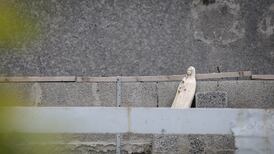If humans were as clever as some microbes there would be no waste disposal problems. We would simply alter our diets to include refuse and munch our way through our burgeoning landfill sites.
Prof Max Coleman, a researcher at Reading University, described his work on a remarkable organism known as desulfovibrio which grows on Norfolk muds and can convert mud into solid rock in as little as two or three years.
Those studying the process by which sediments gradually hardened into stone had always assumed it took at least 100,000 and perhaps several million years, he said, so his work was forcing a reappraisal.
Desulfovibrio was also noteworthy in that it could alter what it "breathed" to enable it to go on living in the mud. It uses sulphate rather than free oxygen to metabolise, Prof Coleman said, releasing oxides of iron or ordinary rust. It could then alter so that it could begin breathing this rust when the sulphate ran out.
"This community survives because it cleans up its own garbage," he said. It is an example of only one of the many marvellous microbes being discovered in the most unusual environments.
Prof John Parkas, of the University of Bristol, described his work looking for organisms in deep water ocean sediments. He had discovered enormous colonies of microbes - to 300,000 microbes per milligram of sediment - buried 500 metres down in sediments under 2.5km of water in the western Pacific Ocean. The deepest find was at 842 metres in sediments off New Guinea. The numbers of microbes did not appear to drop off by depth, he said, and the sediments were about 15km deep so it was likely that they populated the sediments right down to the underlying basalt and possibly right into the stone itself.







